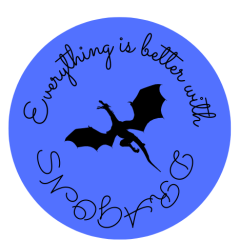How glow sticks work. It’s quite handy that I happened to write my dissertation, way back in 2003, on the subject of luminescence since that’s what we’re talking about. Unfortunately, I can’t find my dissertation or my OHP slides – yes we were still using overhead projectors at Durham University in the early 2000’s – so I’ve actually had to look things up, mostly Jablonski diagrams. I had a really good one that I used for my dissertation, but like I said, I can’t find them.
Luminescence for beginners
Luminescence is light produced without heat. You can squish some rocks and get luminescence, there are fish that make their own lights in the deep ocean, and rot will produce luminescence – this is bioluminescence. Chemicals reacting with each other will, in some circumstances, produce luminescence – that’s chemiluminescence. Whether the luminescence is chemical or biological, they all work pretty much the same way.
Electrons eat high energy photons, get all excited then vomit light, like hyperactive children at a birthday party

By Smokefoot (Own work) [CC BY-SA 3.0 (http://creativecommons.org/licenses/by-sa/3.0)%5D, via Wikimedia Commons
This is a Jablonski diagram – a very simple one since we’re just discussing the basics. An electron at ground state absorbs energy – a photon – which forces it up in to an excited state. It’s in a higher energy level, a place it is not comfortable being because there are only certain energy levels any particular electron can occupy. The electron falls back in to it’s ground state and releases light. If the electron returns to it’s ground state energy level quickly it produces a quick flash of light, called fluorescence and the amount of energy out is equal to the amount of energy in. On the other hand, if it returns slowly by jumping from one intermediate energy level to another before returning to ground state it produces light over a longer period of time, and the amount of energy, and consequently the wavelength of the light out, is smaller. This is called phosphorescence.
Glow sticks
Now we know, sort of, how it works, how does that apply to the glow sticks the niece asked me about? Well, those sticks have to be cracked and that’s when the chemistry happens. When you crack a glow stick you break a glass chamber inside; this allows two chemicals to mix and react, causing the absorption of photons and the release of light. A fluorescent dye is added to one of the chemicals to produce the colour. The chemicals are called diphenyl oxalate – which with the dye is in the outer chamber of the glow stick -, and hydrogen peroxide, which is contained in the inner, glass, chamber. As the reaction takes place the dye is excited and it produces coloured light. A good illustration of the dyes used and the chemical reaction can be found at Compound Interest but I’ll add the graphic below for your perusal.

How things have changed!
I’m going to sound really old now. Back in 2003 when I was writing my dissertation and desperately looking for information beyond the text book my dissertation tutor recommended, there was little in the way of help online. If I wanted to read a paper I had to hope we had a university subscription, and had to print them off, or hope there was something in the miles of shelves dedicated to journals in the university library.
Now you can put the appropriate words in to a search engine and the someone has probably made a page explaining the basics, and then the journals will have links to papers on the subject. And it’s all available, fairly often free, to access and read on your tablet. What lucky, lucky children, to be getting an education in such a world.
Of course there’s the problem of too much data to process, but that’s another story.


